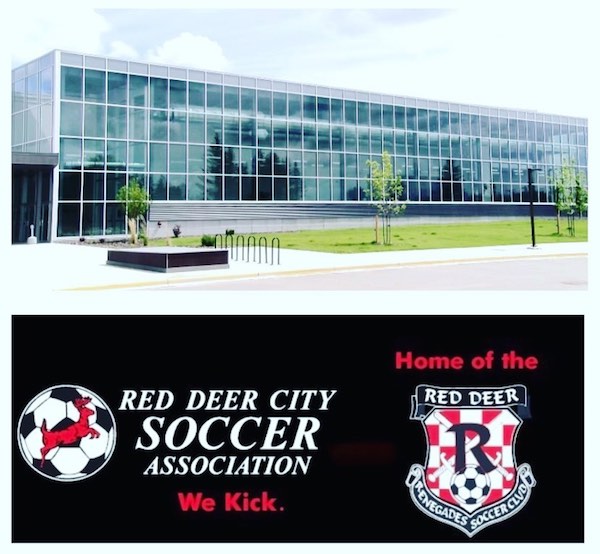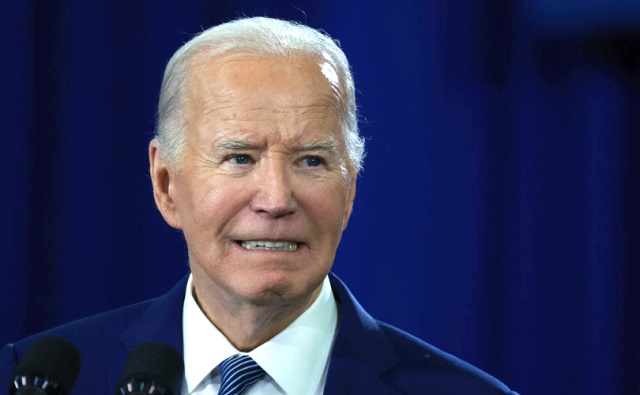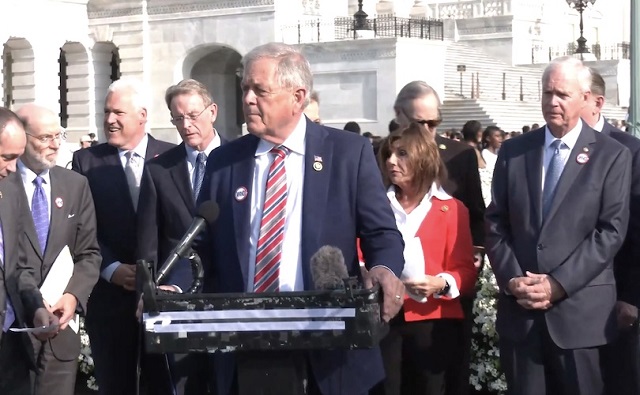Community
Red Deer Renegades winter programs moving to Exhibition Hall at Westerner Park

News release from the Red Deer City Soccer Association
RDCSA and Westerner Park Rekindle Long Standing Partnership
The Red Deer City Soccer Association (RDCSA) and Westerner Park are re-entering a multi-year partnership that will see the new Exhibition Hall of Westerner Park leased out to RDCSA. The lease, set to start in October 2022, will see the Soccer Association lay down a state-of-the-art indoor turf that will be multi-sport capable thus allowing for sub leasing opportunities. For Red Deer Renegades soccer players, it will be a place to call home as the turf can be used as a 9v9 field, or two 7v7 fields.

Prior to entering the COVID era, RDCSA and Westerner Park had a 13-year long partnership. This partnership started off inside the Stockmen’s Pavilion with one turf field. “This was a game changer for us as we were able to continue to train and develop our players in an environment that mimics outdoor game. We were one of the pioneers in popularizing indoor board less soccer in Alberta,” said Ado Sarcevic, General Manager for RDCSA. The needs of the soccer organization grew rapidly, as did the partnership with Westerner Park. This growth resulted in the purchase of two new turf fields and the rental of both the Agricentre West and Agricentre East facilities. Unfortunately, with the rise of COVID, the need for the indoor facilities diminished and the long-standing partnership would have to be put on hold.
With COVID starting to be a part of history, the Soccer Association has seen a record high number of registrations, even surpassing pre COVID figures. RDCSA President Dr. Stephen Kelly gave some insight, “It is great to see families getting back into sport. Kids need sport in so many ways: physical exercise, mental wellness, teamwork skills, building friendships and having fun. We look forward to providing the best possible experience for as many kids as possible.” With more youth than ever being interested in soccer, RDCSA had to be innovative in coming up with new ways to meet current and future demand. “This hall houses four change rooms and gives us the ability to have two 7v7 games running simultaneously or one 9v9 game. Our parents and fans will love the second-floor spectator area where they can watch the games while sipping on their favorite beverage. Our new world class turf has built in
padding and a Velcro system that makes the field virtually seamless. It also has no infill (rubber pellets you see on most turf) which gets to be quite a nuisance,” said Dr. Kelly. With the increased size of the facilities, RDCSA will look to bring their other soccer programs to Westerner Park. “We plan on getting all our players in this facility, grassroots all the way to our elite Renegades teams,” mentioned Kelly.

The future is bright for soccer in Red Deer and the possibilities for the growth of soccer are endless. The Association is extending an invitation to other sports organizations within the community. “We are planning on implementing an online booking system where anyone can go online and reserve a time slot,” said Sarcevic. A partnership that was put on hold, is now set to comeback stronger than ever before, looking to reach new heights in the Red Deer Community.
Community
SPARC Red Deer – Caring Adult Nominations open now!

Red Deer community let’s give a round of applause to the incredible adults shaping the future of our kids. Whether they’re a coach, neighbour, teacher, mentor, instructor, or someone special, we want to know about them!
Tell us the inspiring story of how your nominee is helping kids grow up great. We will honour the first 100 local nominees for their outstanding contributions to youth development. It’s time to highlight those who consistently go above and beyond!
To nominate, visit Events (sparcreddeer.ca)

Addictions
‘Harm Reduction’ is killing B.C.’s addicts. There’s got to be a better way

From the Frontier Centre for Public Policy
B.C. recently decriminalized the possession of small amounts of illicit drugs. The resulting explosion of addicts using drugs in public spaces, including parks and playgrounds, recently led the province’s NDP government to attempt to backtrack on this policy
Fuelled by the deadly manufactured opioid fentanyl, Canada’s national drug overdose rate stood at 19.3 people per 100,000 in 2022, a shockingly high number when compared to the European Union’s rate of just 1.8. But national statistics hide considerable geographic variation. British Columbia and Alberta together account for only a quarter of Canada’s population yet nearly half of all opioid deaths. B.C.’s 2022 death rate of 45.2/100,000 is more than double the national average, with Alberta close behind at 33.3/100,00.
In response to the drug crisis, Canada’s two western-most provinces have taken markedly divergent approaches, and in doing so have created a natural experiment with national implications.
B.C. has emphasized harm reduction, which seeks to eliminate the damaging effects of illicit drugs without actually removing them from the equation. The strategy focuses on creating access to clean drugs and includes such measures as “safe” injection sites, needle exchange programs, crack-pipe giveaways and even drug-dispensing vending machines. The approach goes so far as to distribute drugs like heroin and cocaine free of charge in the hope addicts will no longer be tempted by potentially tainted street drugs and may eventually seek help.
But safe-supply policies create many unexpected consequences. A National Post investigation found, for example, that government-supplied hydromorphone pills handed out to addicts in Vancouver are often re-sold on the street to other addicts. The sellers then use the money to purchase a street drug that provides a better high — namely, fentanyl.
Doubling down on safe supply, B.C. recently decriminalized the possession of small amounts of illicit drugs. The resulting explosion of addicts using drugs in public spaces, including parks and playgrounds, recently led the province’s NDP government to attempt to backtrack on this policy — though for now that effort has been stymied by the courts.
According to Vancouver city councillor Brian Montague, “The stats tell us that harm reduction isn’t working.” In an interview, he calls decriminalization “a disaster” and proposes a policy shift that recognizes the connection between mental illness and addiction. The province, he says, needs “massive numbers of beds in treatment facilities that deal with both addictions and long-term mental health problems (plus) access to free counselling and housing.”
In fact, Montague’s wish is coming true — one province east, in Alberta. Since the United Conservative Party was elected in 2019, Alberta has been transforming its drug addiction policy away from harm reduction and towards publicly-funded treatment and recovery efforts.
Instead of offering safe-injection sites and free drugs, Alberta is building a network of 10 therapeutic communities across the province where patients can stay for up to a year, receiving therapy and medical treatment and developing skills that will enable them to build a life outside the drug culture. All for free. The province’s first two new recovery centres opened last year in Lethbridge and Red Deer. There are currently over 29,000 addiction treatment spaces in the province.
This treatment-based strategy is in large part the work of Marshall Smith, current chief of staff to Alberta’s premier and a former addict himself, whose life story is a testament to the importance of treatment and recovery.
The sharply contrasting policies of B.C. and Alberta allow a comparison of what works and what doesn’t. A first, tentative report card on this natural experiment was produced last year in a study from Stanford University’s network on addiction policy (SNAP). Noting “a lack of policy innovation in B.C.,” where harm reduction has become the dominant policy approach, the report argues that in fact “Alberta is currently experiencing a reduction in key addiction-related harms.” But it concludes that “Canada overall, and B.C. in particular, is not yet showing the progress that the public and those impacted by drug addiction deserve.”
The report is admittedly an early analysis of these two contrasting approaches. Most of Alberta’s recovery homes are still under construction, and B.C.’s decriminalization policy is only a year old. And since the report was published, opioid death rates have inched higher in both provinces.
Still, the early returns do seem to favour Alberta’s approach. That should be regarded as good news. Society certainly has an obligation to try to help drug users. But that duty must involve more than offering addicts free drugs. Addicted people need treatment so they can kick their potentially deadly habit and go on to live healthy, meaningful lives. Dignity comes from a life of purpose and self-control, not a government-funded fix.
Susan Martinuk is a senior fellow at the Frontier Centre for Public Policy and author of the 2021 book Patients at Risk: Exposing Canada’s Health Care Crisis. A longer version of this article recently appeared at C2CJournal.ca.
-

 Health1 day ago
Health1 day agoTransgender activists are threatening the author of scathing UK report on child ‘sex changes’
-

 conflict1 day ago
conflict1 day agoCol. Douglas Macgregor torches Trump over support for bill funding wars in Ukraine and Israel
-

 Frontier Centre for Public Policy1 day ago
Frontier Centre for Public Policy1 day agoThe end of Canada: The shift from democracy to totalitarian behavior in the ‘pandemic era’
-

 COVID-192 days ago
COVID-192 days agoInquiry shows Canadian gov’t agencies have spent $10 million on social media ads for COVID jabs
-

 Alberta1 day ago
Alberta1 day agoAlberta’s baby name superstar steals the show again
-

 Alberta8 hours ago
Alberta8 hours agoActivity-Based Hospital Funding in Alberta: Insights from Quebec and Australia
-

 Business6 hours ago
Business6 hours agoUN plastics plans are unscientific and unrealistic
-

 International1 day ago
International1 day agoBiden admin expands Title IX to include ‘gender identity,’ sparking conservative backlash






